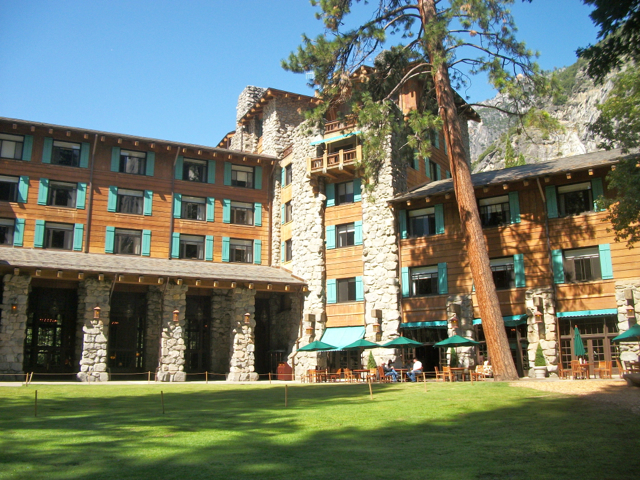First established as a national monument in 1936 due to the efforts of desert enthusiast Minerva Hoyt,
Joshua Tree National Park was elevated to national park status in 1994, so 2011 is its 75th anniversary as protected land. Nearly 558,000 acres of the park's 790,636 acres are designated as wilderness. Its elevation, dry desert air, and isolation make it a favorite of astronomers and stargazers.
Humans have occupied the area encompassed by Joshua Tree National Park for at least 5,000 years. The first group known to inhabit the area was the Pinto Culture, followed by the Serrano, the Chemehuevi, and the Cahuilla. In the 1800s, cattlemen grazed stock on the ample grass available at the time and built water impoundments for them. Miners dug tunnels looking for gold. Homesteaders built cabins, dug wells, and planted crops. All left their mark on the land and added to the rich cultural history of the park.
Below is the namesake Joshua tree. It was used extensively by American Indians for baskets and sandals as well as for food, by eating the flower buds and the raw or roasted seeds. Legend says it was named by early Mormon immigrants who likened its outstretched arms to the biblical figure Joshua in supplication.
Joshua Tree National Park's nearly 800,000 acres protect three ecosystems which meet here, the Sonoran Desert, the Mohave Desert, and the Little San Bernadino Mountains at 4000 feet elevation. The biodiversity protected in these distinct ecosystems include ocotillo, jumping cholla cactus, Joshua trees, juniper and pinyon pine, bighorn sheep, lizards, frogs, tortoises, toads, kit fox, squirrels, chuckwillas, six species of rattlesnakes, coyotes, jack rabbits, kangaroo rats, and migratory birds.
An interesting area is Hidden Canyon, a 55 acre canyon accessible on a mile+ loop trail that circles the inside of the canyon and is surrounded by high rock formations. Legend has it that cattle rustlers in the 1870s used this hidden canyon and its box canyon at the end to hide themselves and their stolen cows. Rock climbers now use the rock cliffs which enjoy world-class reputation. In fact, the trail signs also direct climbers to the various popular climbing formations.
The Coacheela Valley extends 50 miles as seen below, though pollution from Southern California often impairs the panorama from up here at Keys View, elevation 5185 feet. The Salton Sea is just beyond peaks in the middle of the photo, and the infamous San Andreas Fault runs through the valley.
Edward Abbey wrote, "It seems to me that the strangeness and wonder of existence are emphasized here, in the desert, by the comparative sparsity of the flora and fauna: life not crowded upon life, with a generous gift of space for each herb and bush and tree, each stem of grass, so the living organism stands out bold and brave and vivid against the lifeless sand and barren rock."
Indeed, deserts are not deserted but teeming with life -- insects, amphibians, reptiles, birds and mammals, algae, fungi, cactus, flowers, shrubs, and trees, all well adapted to conserve water, cope with temperature extremes, escape predators, and survive the sun and wind and sometimes torrential rains. Appreciation and eventual love of arid desert panoramas may be an acquired taste, but give it a try! There is great beauty and wondrous solitude in the desert.


















































